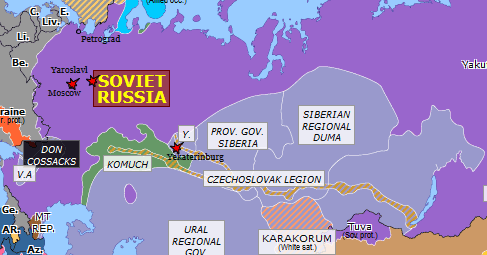
Wishing to join Russia, the area was instead awarded to Poland in 1919 and the movement was suppressed.ĬRIMEAN PEOPLE’S REPUBLIC (DEC 1917 – JAN 1918)Įstablished by Crimean Tatars, the republic was quickly overrun by Bolsheviks, who were again evicted by Ukrainian and German forces in April. The Lemko minority, living in the Russian-Polish-Hungarian borderlands, saw the empires collapsing as an opportunity to unite.

The area was finally admitted to Czechoslovakia, becoming a part of Ukraine in 1946. It remained de facto independent until 1923.Ī Ukrainian-speaking part of Austria-Hungary, the inhabitants revolted in 1919 and declared an independent republic intending to join an independent Western Ukraine. The state had no authority and lost all legitimacy when the German forces left in November.Ĭaught in the chaos between Red, German and Polish forces, the Lithuanian town of Perloja organized an independent government and raised an army of 300 men to defend the city. Germany recognized the country, but it soon became a part of the unrecognized Baltic Duchy.Īfter the Treaty of Brest-Litovsk, German Baltic nobles declared an independent state and offered to join a personal union with Germany. German Baltic nobles set up a German-dominated state and offered the crown to Kaiser Wilhelm II. They were later expelled by German forces.ĭUCHY OF COURLAND AND SEMIGALLIA (MAR-NOV 1918)Īfter Russian forces withdrew from the Baltics. In the chaos of revolution, around 90 sailors manning a Russian navy fort declared independence and began taxing the local Estonian population. SOVIET REPUBLIC OF SOLDIERS AND FORTRESS-BUILDERS OF NAISSAAR (DEC 1917 – FEB 1918) The republic was overrun by the Red Army in 1920, and during the Winter Wars, the entire population was forcibly relocated to Central Asia.

REPUBLIC OF NORTH INGRIA (JULY 1919-OCT 1920)Ī national minority since the 1600s, Ingrian Finns declared independence in 1919 hoping to join an independent Finland.

The flag and coat of arms were designed by renowned Finnish painter Akseli Gallen-Kallela. Karelian Finns declared independence in July 1919, initially seeking to join independent Finland, but the republic was defeated by the Red Army the following May. Somewhere ethnic minorities looking for autonomy, others were warlords claiming legitimacy through the veneer of a state, and some were early Soviet republics that didn’t survive until the formation of the USSR in 1922.īy then, most of these states were defeated and either dissolved or merged with Soviet Republics. In its wake, a multitude of independent entities was declared. The Russian Revolution of 1917 led to the collapse of the world’s largest multiethnic empire.


 0 kommentar(er)
0 kommentar(er)
